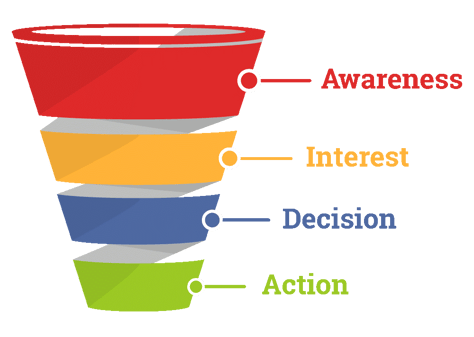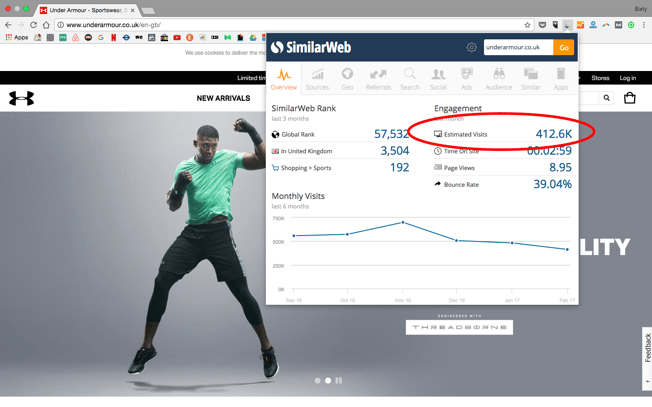

This guest post is printed here with the author’s permission. You can follow the author on Twitter at @Sixtylicious
We are living in an age of unprecedented change. An age where technology allows teens to set up TV stations via YouTube in their bedrooms. Today, the average person has more computing power in their pocket than NASA did during the first moon landings.
With this, we hear phrases like ‘inbound marketing’ and ‘content strategy’ being bandied about more and more. But what do these terms mean, and are they beneficial for your business? If so, how?
Google defines content marketing as a type of marketing that involves the creation and sharing of videos, blogs and social media posts that does not explicitly promote the brand.
Content marketing comes down to the basic truth that people hate being sold to. When was the last time you turned to your phone because the TV ad breaks were boring you?!
This is why content marketing is becoming the preferred weapon of choice for brands today. In fact, forward-thinking publishers like Newscred are claiming that the content journey is the consumer journey.
Let’s shine a little light on this claim. Today’s marketers know that the customer’s path to purchase is no longer linear. In the advent of Google, Bing and Yahoo more than 80% of shoppers do online research before purchasing a product.

To keep your brand top of mind and influence your consumers’ purchasing decisions, you need a well-planned content strategy. Here’s why:
Let’s say you’re looking to buy a pair of running shoes. You’ve never bought running shoes before, so you look to Google for guidance:
Stage 1: Awareness
After typing in ‘running shoes’, the top five results in Google Search list five well known retailers’ websites.
Stage 2: Consideration
You’re smart enough not to settle for the first deal that you click on, so you research the price of your chosen shoes on the four other retailers’ websites.
Stage 3: Decision
You decide to buy from the outlet that lists customer reviews on its website for your chosen running shoe brand. You’ve seen your friends talk about these shoes on Facebook too.
Stage 4: Purchase
Safe in the knowledge that you’ve found a bargain, you pull out your card details and make an order!
Those were the stages a customer went through during a typical buying process.
Things get interesting when we see how smarter brands are using digital content to affect this decision journey. An outstanding example is the sportswear brand: Under Armour.
Awareness Stage
Type ‘running shoes’ into Google and Under Armour is listed in the top five results for this particular search query. This is because Google recognises just how popular this brand’s website actually is.
In fact, UnderArmour.co.uk receives nearly half a million visitors a month. The brand’s website consists mostly of high quality imagery and videos. This content draws more and more people to its site. Google sees high levels of web traffic as a ranking signal.

Consideration Stage
Under Armour’s e-commerce strategy has been well thought out. Its listing in Google’s search results takes you directly to the ‘running shoes’ section of its website. Here, its shoe collection is showcased with alluring high res images and rotating videos. This fuels the customer’s impulse to make a purchase.
Decision Stage
Under Armour has a huge social media presence with more than 5.5 million fans on its Facebook page. The brand knows how to keep its fans entertained. Its tactical use of 10 second video stories with famous athletes like professional boxer Anthony Joshua create thousands of views and shares. In conjunction with web traffic, social media activity is another one of Google’s ranking signals.
In essence, content marketing is a recognition that people take to the internet to be entertained, instead of being sold to. This is why, as a tactic, it plays a pivotal role in influencing customer behaviour.
To keep your sales figures nice and high, brands need to stay front-of-mind when it comes to their audience. As we have seen, Google gives priority to websites that have lots of traffic and social media activity. Google rewards these sites by placing them on the first page of its search engine results pages (SERPs).
So start thinking and acting as a media publisher instead of a run of the mill advertiser... Google will reward you handsomely if you do!
Tip #6: If you want to drive interested parties to your website, stop trying to forcibly sell them your products and instead, provide them with content that is entertaining, informative or valuable!
If you want to learn more content marketing planning, including: aligning your content with the sales journey, getting your audience to create content for you, what Google wants from your website and what 'inbound marketing' is, please see these blog posts below:
Using a content strategy to structure the sales journey
Content Marketing Strategy: Get your audience to create your content
What does Google want from your website?
What the hell is Inbound Marketing? And why should you care?
If you'd like to receive the latest 'All that PR & Marketing Bollox...Explained!' blogs straight to your inbox every week, you can subscribe below:





Submit a Comment